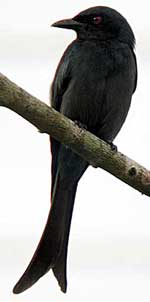 It takes just a couple of hours on winding road starting from Jhapa to arrive at the Bangladesh border post of Changrabandha, traversing India's Chicken Neck. The ecology remains the same but the human landscape is unrecognisable from just half a century ago.
It takes just a couple of hours on winding road starting from Jhapa to arrive at the Bangladesh border post of Changrabandha, traversing India's Chicken Neck. The ecology remains the same but the human landscape is unrecognisable from just half a century ago.
This tropical expanse of Himalayan piedmont and Teesta floodplain looks identical across the three frontiers: the Kamala-Balan basin in Nepal to the Mechi river at the India-Nepal border, and the Teesta and Mahananda which flow into Bangladesh's Rajshashi Division past Siliguri. The banana and bamboo groves, the villages on plinths above the flood line, the drongos and kingfishers on the roadside wires, the whiff of drying hemp. All this could be in any country. The disused meter gauge from the British era still snakes across the India-Bangla frontier at three points.
Several seemingly contradictory forces have transformed the demographic makeup here: open migration, forced migration and prevented migration due to closure of frontiers.
In southeast Nepal, the roadside cemeteries are primarily of the Tibeto-Burman Kirant hill migrants, with many of the graves ornately designed replicas of mountain dwellings. More than 120,000 Nepali-speaking Lhotshampa refugees are huddled here in refugee camps. It has been 12 years since they were ousted from their native Bhutan, and regional geopolitics blocks their return.
The syncretistic mix of cultures in Nepal's Jhapa is nowhere in evidence 40 km away as the crow flies in Bangladesh. The cemeteries here are all Muslim: many of the Hindus have left since Partition. Only the placenames remind of the once-upon-a-time demography: Rangpur, a dynamic marketplace before the borders were drawn in 1947 is now a backwater.
The most striking difference is the visibility of women on the roads of Jhapa and their absence in Rangpur. In Nepal, women will ride bicycles, even 'man' petrol pumps. Closer to the towns, they also wear trousers and t-shirts. The population density is remarkable along the Bangladesh highways, but there are no women about.
The Chicken's Neck is a babel of languages, with Bangla in command but the locals also speaking Nepali, Hindi and Santhali. In Bangladesh, it all dissolves into Bangla. The Nepali which has spread out into a good part of the Indian plains does not penetrate into Bangladesh.
In his book A Princely Imposter (Permanent Black, New Delhi, 2002), historian Partha Chatterjee describes a time when 'India' was one. A zamindar from Bhawal outside Dhaka goes on holiday to Darjeeling using the meter gauge line up to Siliguri. He dies in the hill station, and the rest of the story investigates the claims of an itinerant fakir that he is the actual prince. The story crisscrosses from Darjeeling to Dhaka to Calcutta, a triangle that has collapsed in the last half century, and which in the best of worlds would be revived.
The Nepal-India border is open, a kind of frontier that does most justice to the shared history of all Southasia. The Bangladesh-India frontier has been closed since the rise of East Pakistan, but remained porous. Today, it is in the process of being sealed. India's fence-building to keep out Bangladeshi migrants has reached Changrabanda. To the south stretches an impregnable line of barbed wire, steel pillars, concrete and a service road.
This is one alternative for a Southasian future: weak governments dependent on vote bank politics will take the course of least resistance. But building a fence will only make societies more rigid in their own identities and certitudes. One wonders whether sharply defined frontiers will ever work in Southasia. Instead, is there a lesson to be taken from the open Nepal-India frontier just a few miles away?
What would Lalon Shah Fakir, the great Bangla mystic and Baul minstrel who died in Khustia in 1890, have said of barbed wire fences? The translation is by Brother James (Songs of Lalon, University Press Limited, Dhaka, 1987):
You came into this world with certain expectations; not an iota of all these hopes has been fulfilled. Deeply engrossed in bad companions and bad amusements,
you made a mess of your life.



